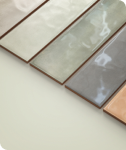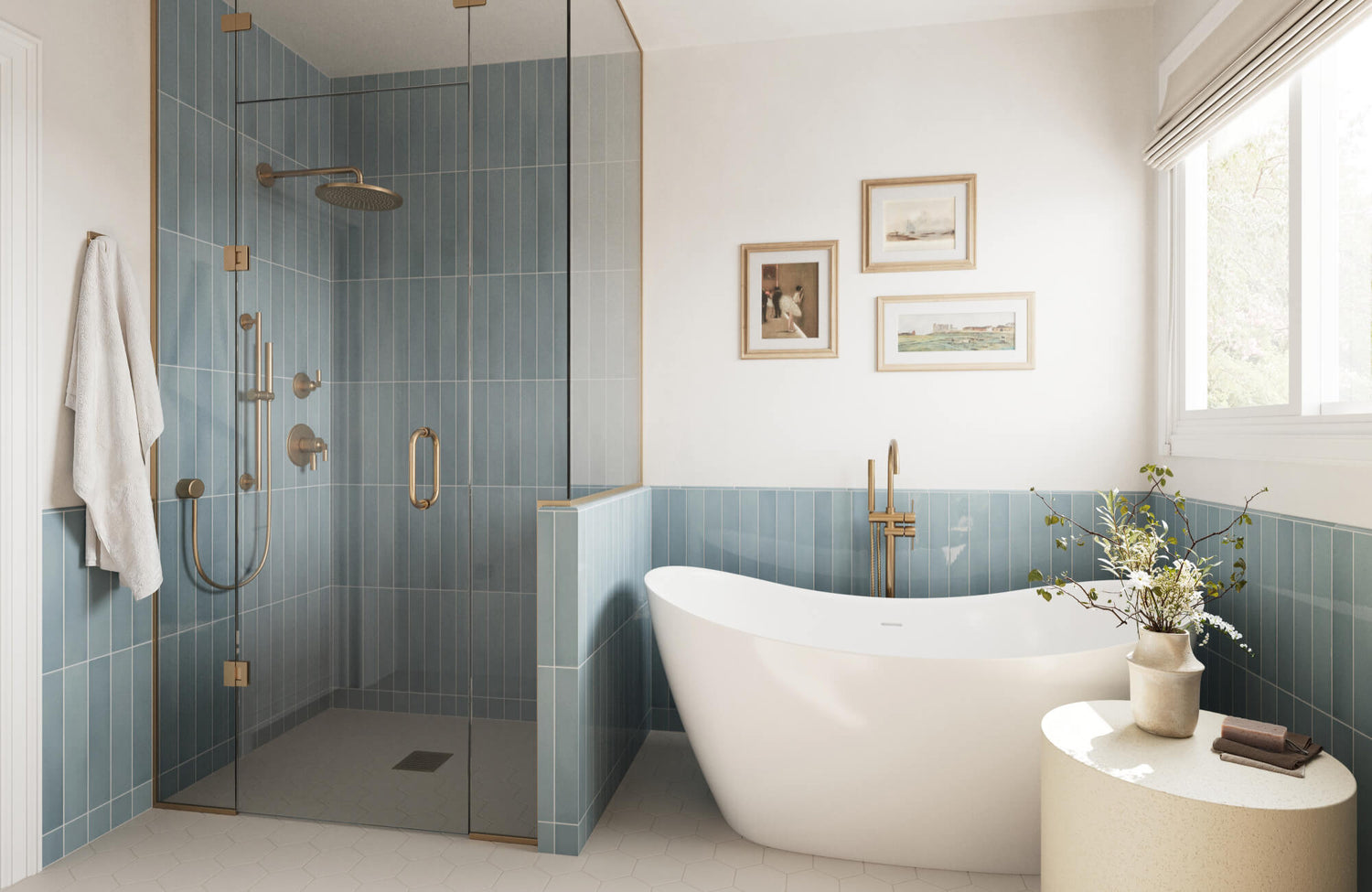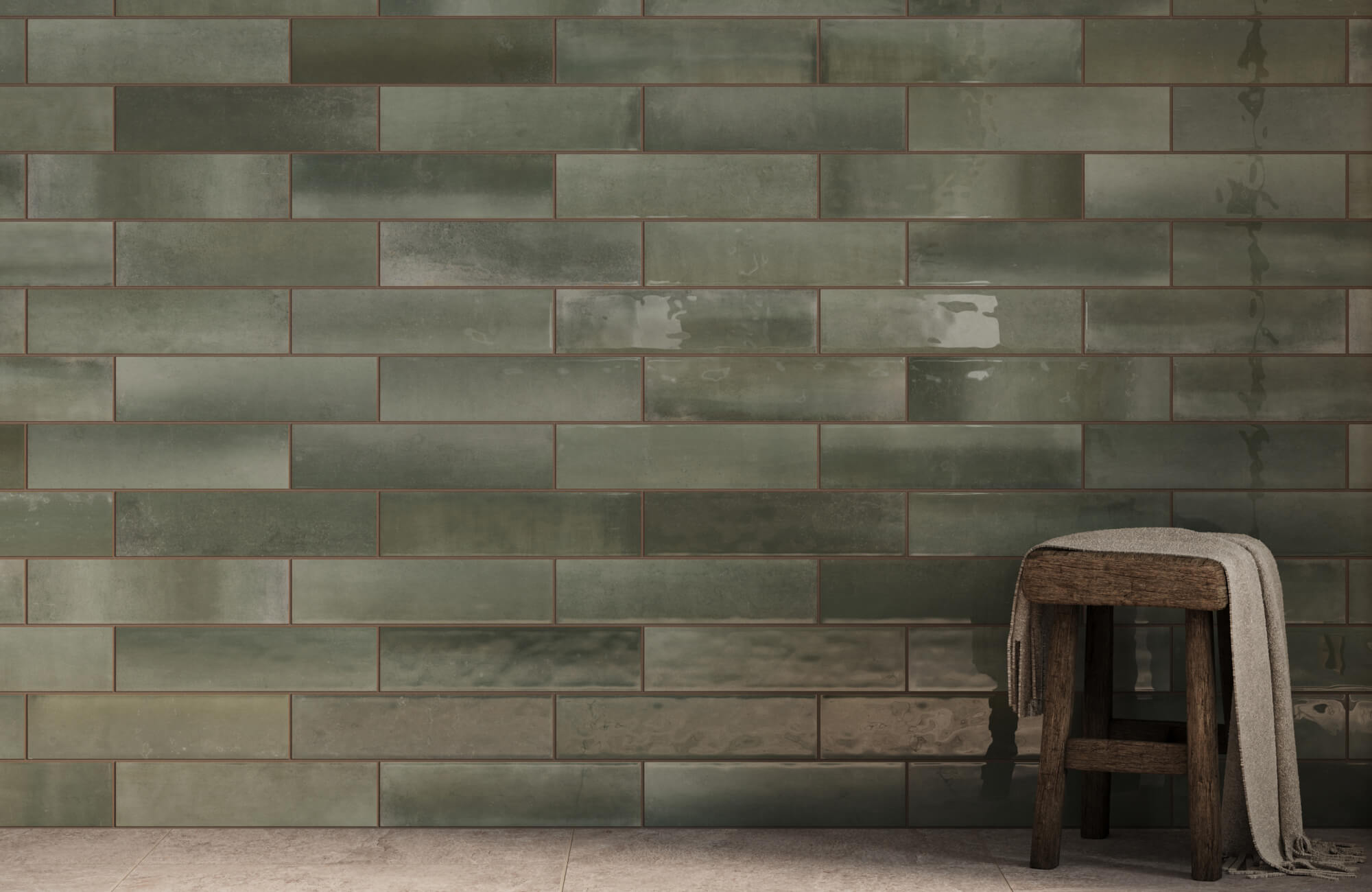Subway tile, with its clean lines and timeless appeal, has become a staple in contemporary interior design. Its versatility allows it to seamlessly integrate into various styles, from minimalist modern to cozy traditional. Whether adorning backsplashes, shower walls, or accent walls, subway tile offers endless possibilities for elevating a space.
Beyond its aesthetic value, subway tile boasts impressive durability and easy maintenance, making it a practical choice for busy areas. However, the true magic lies in the pattern you choose to lay your tiles. The pattern can dramatically influence the overall look and feel of a room, from creating a sleek, minimalist ambiance to adding a touch of vintage charm. In this guide, we'll explore popular tile laying patterns and provide tips on selecting the perfect one for your space. Let's dive in and discover the transformative power of subway tile patterns!

Subway Tile and Its Versatile Nature
Subway tile, with its distinctive rectangular shape and smooth, glazed ceramic surface, has been a popular choice for interior design since the early 20th century. Initially used in New York City subway stations for its durability and easy maintenance, this utilitarian tile has evolved into a versatile design element that complements a wide range of styles.
Beyond its functional benefits, subway tile possesses an undeniable aesthetic appeal. Its streamlined and minimalist design effortlessly complement various interior styles, from traditional to contemporary. Its versatility also extends beyond its classic application, as it can be used to create stunning accent walls, fireplace surrounds, or even outdoor kitchen backsplashes. By experimenting with different colors, sizes, and patterns, you can personalize your space and achieve a unique look. Whether you prefer a subtle, monochromatic palette or a bold, contrasting color scheme, subway tile offers endless possibilities.
Classic Subway Tile Laying Patterns
Classic subway tile patterns have stood the test of time, offering a timeless and sophisticated look. Here are some of the most options:
Horizontal Straight Stack
The horizontal straight stack pattern is a classic choice for subway tile installations, offering a clean, minimalist aesthetic that complements a wide range of interior design styles. By arranging tiles in a simple, horizontal alignment, this pattern creates a sense of order and visual width, making it ideal for spaces where you want to emphasize spaciousness and continuity. The horizontal stack pattern is particularly well-suited for modern, contemporary spaces, where clean lines and simplicity are key design principles.
For a small bathroom or kitchen, the horizontal straight stack pattern is especially effective in creating an open, airy feel. Choosing lighter tile colors can further enhance this effect, adding brightness and a sense of space. Alternatively, darker tiles, like our Nadine 3x12 Glossy Ceramic Tile in River, with matching grout bring an element of sophistication and depth without overwhelming the area.
Brick Pattern
The brick pattern is a timeless classic that adds visual interest and texture to any space. By offsetting each row of tiles by half a tile length, this pattern creates a dynamic, zigzagging effect. The brick pattern can also be used to create a variety of looks, from subtle and understated to bold and dramatic. It’s a popular choice for subway tile backsplashes, bathroom walls, and accent walls. Tiles like the Teagan 3x12 Glossy Ceramic Tile in Pearl are ideal for achieving a refined yet versatile aesthetic, fitting beautifully in both rustic and contemporary designs. Pairing it with contrasting grout can emphasize the tile layout, creating a more industrial or vintage feel.
Herringbone Pattern
The herringbone pattern is a sophisticated choice for those seeking a more intricate and eye-catching design. This pattern involves arranging subway tiles in a V-shape, creating a distinctive zigzag motif. It’s particularly well-suited for modern, contemporary interiors, as well as traditional and eclectic styles.
A warm-toned tile, like the Olivia 4x16 Glossy Ceramic Tile in Cotto, can elevate the herringbone pattern, bringing a touch of earthy sophistication that works beautifully in both classic and modern spaces. While stunning, the herringbone pattern can be complex to install, making it a good candidate for professional help if you’re aiming for precision. For small spaces like powder rooms, a herringbone accent wall can add an unexpected touch of class.
Diagonal Pattern
The diagonal pattern is a bold and modern choice that can make a room feel larger and more spacious. By laying subway tiles diagonally, this pattern creates a dynamic, geometric effect that draws the eye and adds visual interest to a room, especially in small spaces. It’s often used to create a focal point, such as a backsplash or accent wall. The diagonal lines also create a sense of movement, making this pattern ideal for areas where you want to add energy and depth, such as entryways or home offices. For those who want to experiment with color, this pattern works well with two contrasting hues.

Creative Subway Tile Laying Patterns
While classic tile patterns offer timeless appeal, creative tile layouts can elevate your space to new heights. Here are some creative subway tile laying patterns to elevate your interior design and make a bold statement.
Vertical Stack
The vertical stack pattern is a contemporary take on the traditional straight stack. By orienting the subway tiles vertically, this pattern creates a sense of height and drama, making it ideal for small spaces or rooms with low ceilings. The vertical stack can be used to create a sleek, minimalist look or a bold, eye-catching statement, depending on the color and size of the tiles.
A refreshing color choice, like the Palmer 3x12 Glossy Porcelain Tile in Eucalyptus, adds a modern yet calming feel to the vertical stack pattern, making it a standout option for bathrooms or accent walls. For small spaces, using vertical stack tiles can make the ceiling appear higher. When combined with darker grout, this pattern delivers a bold look that fits well with modern and industrial designs.
Basketweave Pattern
The basketweave pattern is a classic design that has been used for centuries. This pattern involves weaving subway tiles together in a basket-like formation, creating a sophisticated and timeless look. It is also a versatile choice that can be used in a variety of settings, from traditional to contemporary, and is an excellent way to add texture and depth to a space.
For a softer, more modern take, consider a lighter tile such as the Everly 3x8 Matte Ceramic Tile in Ice, which brings subtle elegance to the basketweave without overwhelming the room. For a vintage or retro vibe, use black and white tiles in this pattern. This approach works well in both kitchens and bathrooms, where the intricate design adds a touch of elegance while keeping the space balanced.
Pinwheel Pattern
The pinwheel pattern is a fun and whimsical choice for those who want to add a touch of personality to their space. This pattern involves arranging subway tiles in a circular or spiral formation, creating a dynamic and eye-catching effect. The pinwheel pattern is a great way to create a focal point in a room, such as a backsplash or accent wall. It’s also particularly well-suited for children’s bathrooms or playful, eclectic interiors. For a more subtle look, monochrome pinwheels create a sophisticated, soft appearance, suitable for accent walls in common areas.
Choosing the Right Pattern for Your Space
Choosing the right tile pattern is a crucial decision that can significantly impact the overall aesthetic of your space. Whether you're aiming for a sleek, minimalist look or a bold, eclectic design, the careful selection of a subway tile pattern can elevate your interior to new heights.
Tailoring the Pattern to Your Space's Dimensions
When selecting a subway tile pattern, it’s essential to consider the size and shape of your space. For small rooms, lighter colors and simpler patterns can create a more open and airy feel. Conversely, larger spaces can accommodate bolder patterns and darker colors without feeling overwhelming. Additionally, the orientation of the tiles can impact the perceived dimensions of a room. For instance, laying subway tiles vertically can make a room appear taller while laying them horizontally can make it seem wider. To achieve a balance, choose a pattern that aligns with the function of the space. For frequently used areas, like kitchens, go for patterns that hide stains and wear well, such as the brick or herringbone layout.
Harmonizing Pattern and Style
The chosen subway tile pattern should also complement your overall design aesthetic. For a minimalist, modern space, a simple, clean pattern like a straight stack or a subtle herringbone can enhance the sleek, streamlined look. Traditional interiors, on the other hand, may benefit from more intricate patterns like basketweave or pinwheel. Ultimately, it’s important to strike a balance between the pattern’s complexity and the room’s overall style.
Patterns like chevron and vertical stack are often best paired with minimal, modern furniture, while classic brick or basketweave works well with vintage or eclectic decor. To help you visualize specific subway tile patterns in your home, try our Augmented Reality (AR) tool at Edward Martin. This feature allows you to place a tile pattern on your wall or floor virtually, using your smartphone or tablet. It’s invaluable for seeing each subway tile pattern and color within your actual space, helping you make confident decisions from the comfort of your home.
The Power of Color and Grout
The color of your subway tiles and grout can significantly impact the final appearance of your space. Light-colored subway tiles and grout can create a bright, airy feel, while darker colors can add drama and sophistication. Consider also the color palette of your room and choose tile and grout colors that complement or contrast with your existing decor. A well-chosen grout color can enhance the pattern’s visual impact, while a neutral grout color can create a more understated look. For a contemporary look, try pairing dark grout with white subway tiles to emphasize the tile shape and pattern. In contrast, a matching grout color can soften the lines, making the pattern blend seamlessly with the space.

DIY Tile Installation Tips
Ready to take on a DIY subway tile project? With careful planning and the right techniques, you can transform your space and achieve stunning results. Here, we’ll walk you through the essential steps, from preparing the surface to grouting and sealing. Let’s get started!
Essential Tools and Materials
Before embarking on a DIY subway tile installation project, it’s crucial to gather the necessary tools and materials. This typically includes a tile cutter or wet saw, tile nippers, a level, tile spacers, a notched trowel, tile adhesive, grout, grout float, grout sponge, sealant, and, of course, the subway tiles themselves. It’s advisable to invest in high-quality tools to ensure a professional finish.
Preparing the Surface
A well-prepared surface is essential for a successful subway tile installation. Begin by removing any existing tile or wallpaper and cleaning the surface thoroughly to remove dirt, grease, and other contaminants. Next, assess the surface for any unevenness or damage. Minor imperfections can be addressed with a leveling compound, while significant issues may require more extensive repairs. A properly prepared surface will ensure optimal adhesion and prevent future problems.
Precision Cutting
Cutting subway tiles to fit around corners, outlets, and other obstacles is a skill that requires practice. A tile cutter or wet saw is ideal for straight cuts, while tile nippers can be used for smaller, more intricate cuts. When cutting tiles, it’s important to wear safety goggles and a mask to protect your eyes and lungs from tile dust. Practice makes perfect, so don’t be afraid to experiment with different cutting techniques.
Grouting and Sealing
Grouting is the process of filling the gaps between subway tiles with a mortar-like mixture. It not only enhances the appearance of the tile installation but also strengthens the overall structure. After applying the grout, it’s essential to wipe away excess grout with a damp sponge, being careful not to remove too much. Sealing the grout is also particularly important in high-moisture areas such as bathrooms and kitchens.
When to Hire a Professional Tile Installer
While a DIY subway tile installation can be a rewarding experience, there are certain situations where it’s best to leave the job to a professional. If you’re dealing with a complex layout, intricate patterns, or large-scale projects, hiring a skilled subway tile installer can save you time, effort, and potential headaches. Additionally, if you lack confidence in your tiling abilities or have limited experience, it’s wise to seek professional assistance to ensure a flawless result.
Professional tile installers possess the expertise, tools, and experience to handle even the most challenging tile projects. They can accurately measure and cut tiles, ensuring a precise and aesthetically pleasing installation. Moreover, professionals have access to high-quality materials and can provide expert advice on tile selection and pattern layout. By hiring a professional, you can rest assured that your subway tile installation will be completed efficiently and to the highest standards.
Bringing Your Subway Tile Vision to Life
Choosing the right subway tile pattern is a crucial decision that can significantly impact the overall aesthetic of your space. By carefully considering factors such as room size, design style, and personal preference, you can select a pattern that complements your aesthetic vision. Whether you opt for a classic straight stack or a bold, creative design, remember to consider the practical aspects of your tile installation, such as grout color and maintenance. If you’re unsure about tackling a DIY subway tile project, don’t hesitate to consult with a professional tile installer. By following these guidelines, you can create a beautiful and functional space that reflects your unique style.










